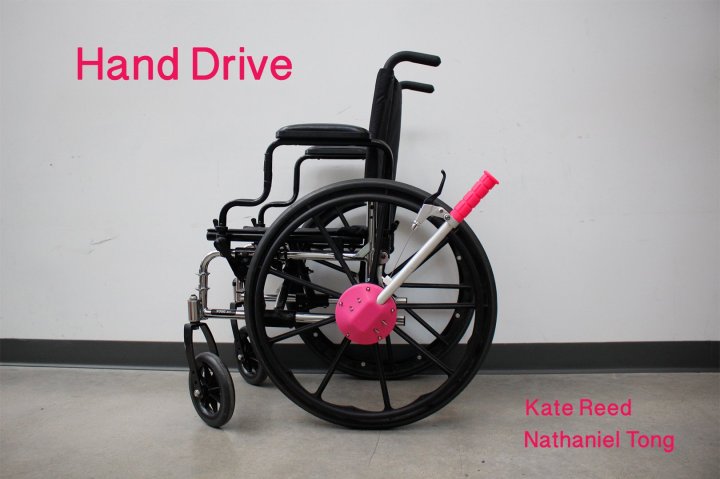
Rather than reinvent the wheelchair, Reed, Pagani and Tong decided to improve upon existing wheelchair designs. The trio focused on a lever wheelchair model which uses a lever mechanism and rowing motion to move a person forward. Not only is a lever-equipped wheelchair easier on a person’s shoulders and wrists, but it also is faster than push-wheel propulsion that relies on the hands to push the wheels forward. Lever wheelchairs are efficient, but their price tag, which ranges from $2,000 – $10,000, puts them out of the reach of most people.
The students wanted to make this system affordable, so they decided to create their own lever that can be retrofitted onto existing wheelchairs. They began with a handful of bicycle parts but found the components were not suitable a wheelchair since they only allowed movement in one direction. The team went back to the drawing board and decided to create their own custom mechanism, using a 3D printer to supply most of the parts they needed.
After experimenting with different designs including five major prototypes, the trio decided to use a milled planetary ratchet with a circular detent in the middle. This mechanism allows the ratchets to engage and disengage depending on whether a user is moving forward to backward. The internal ratchets are fitted inside a plastic outer housing which attaches to a wheelchair wheel. Different housings can be used for different wheels, making the Hand Drive compatible with a variety of wheelchairs.
Because they used 3D printed parts in much of their design, the Hand Drive only costs $40 to make and assemble. The only parts that can’t be printed are the ratchets, but the team hopes to address this shortcoming in future versions of the product.
“In the big picture, one of our goals is to work towards a design where the planetary ratchets can be 3D printed instead of milled,” writes Reed, “We never want to lose sight of our goal to make the Hand Drive affordable and accessible for all.”
They also made their designs open source, enabling others to build a custom version to suit their needs and even improve upon the idea if so inspired.
Editors' Recommendations
- Nvidia turns simple text prompts into game-ready 3D models
- AMD is bringing 3D V-Cache back to Ryzen 7000 — but there’s a twist
- AMD’s revolutionary 3D V-Cache chip could launch very soon
- Fighting football injuries with 3D-printed, hyper-personalized pads
- AMD’s 3D-stacked Ryzen 7 5800X3D is ‘world’s fastest gaming processor’




